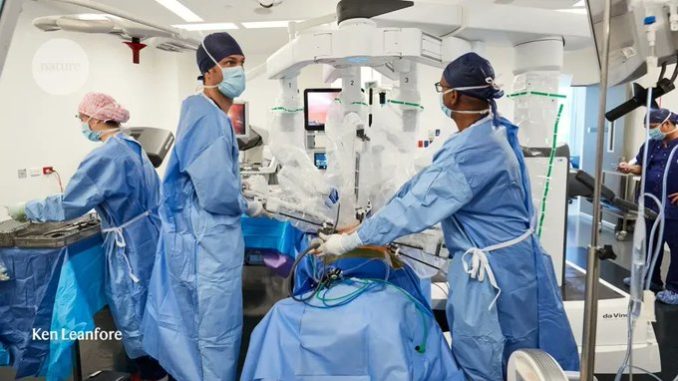
The COVID-19 pandemic has stretched health-care workforces around the world to their limits, as illness and burnout extract a toll from clinicians, nurses and staff. The need for innovations that can reduce workloads is pressing and has intensified interest in artificial intelligence (AI) and robotics as potential technologies to help in many ways, from processing doctors’ notes, to improving surgical outcomes, and even assisting clinicians with rapid decision-making during crises.
Cancer diagnosis and treatment have been especially affected by the pandemic, as hospital resources are diverted to urgent infectious-disease outbreaks, and health-care staff are ill or in isolation. Many of the key pressure points in this field are tasks that lend themselves to innovative solutions using AI and robotics. One of these is image processing for cancer screening and diagnosis; for example, checking mammograms. “Screening takes a lot of radiologists’ effort, and 98.5% to 99% of the mammograms are normal,” says Ioannis Sechopoulos, a medical imaging specialist at Radboud University Medical Center in Nijmegen, the Netherlands.
